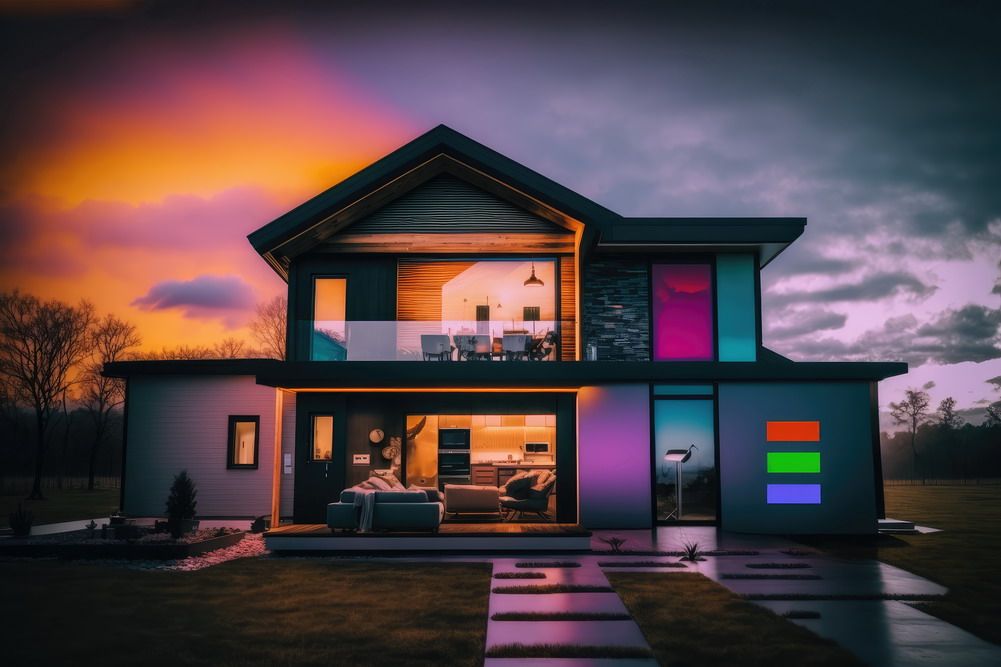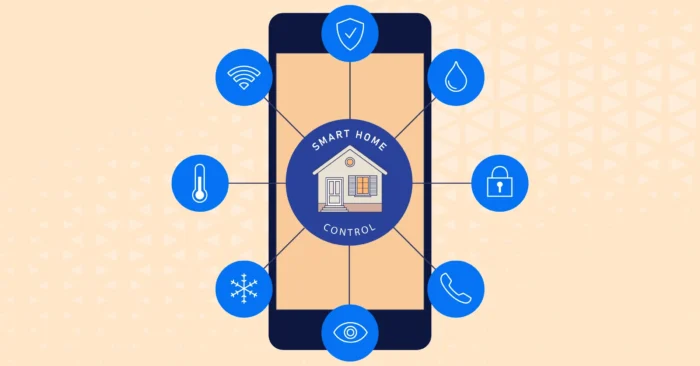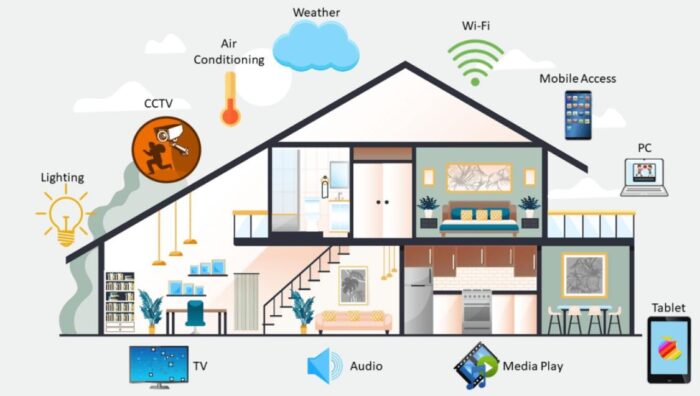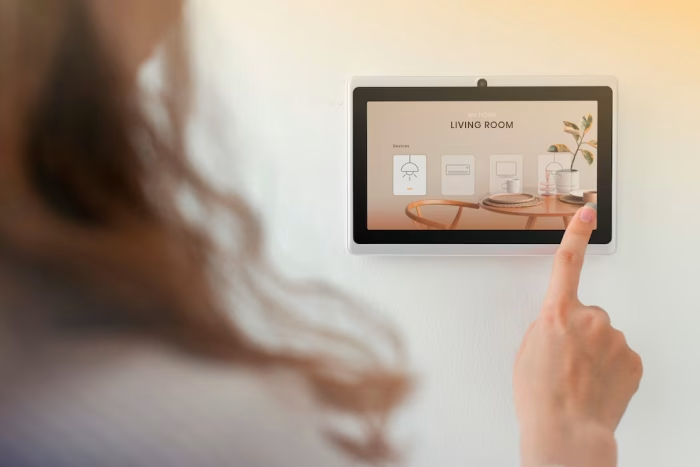
My son and I both have smart home devices in our homes. He has a limited number of devices and prefers to control them with the apps that came with them. I have more devices and plans to continue adding to my system. So I ditched the apps in favor of a smart home ecosystem.
There are definite pros and cons to going with an ecosystem. I believe I made the right choice for my setup, especially given my plans to expand with more devices and added capabilities. Meanwhile, my son is perfectly content using a couple of apps to control his devices. We each found what works for us.
Single App Home Automation Control

So, what does my son’s limited home automation system look like? He has a collection of smart lights and plugs from two different manufacturers. Each manufacturer has its own smartphone app. Both are installed on his phone.
He can use the apps to control his devices in real time. But he can also automate his devices. During the holidays, for example, two of his smart plugs control the Christmas lights. He programs them to turn on and off at the same time each evening. If he ever needs to intervene manually, he can do so with his phone.
I can see the appeal of my son’s setup. Because he is only dealing with a limited number of lights and plugs, he’s not doing anything complicated. He decided it is not worth his time or effort to research ecosystems and learn how they work. He has two phone apps that do everything he wants them to do.
Such is the nature of single app home automation control. Just about every home automation device you could buy has a companion for controlling it. I chose not to go that route because I have so many more devices in my system.
Home Automation Within an Ecosystem

In the absence of multiple smartphone apps, home automation devices can be controlled by way of an ecosystem with a software hub. An ecosystem is essentially a collection of devices that all work seamlessly together. They are centrally controlled by the ecosystem’s platform.
Rather than going with a commercial product, I chose an open-source platform with its own ecosystem. That ecosystem supports thousands of brand-name and off-brand devices. The biggest challenge for me is making sure I choose compatible devices whenever it is time to buy something new.
The main advantage of my setup is that I can control every device in the system with a single app. I can activate and deactivate devices in real time. I can create scripts to automate devices as needed. I can monitor video cameras, get the weather forecast, and adjust the temperature in my home from a single software location.
On My Phone and Computer
There is a lot to love about the ecosystem concept. One of the features I most appreciate is the ability to access my system with both my phone and computer. The phone is a great option for quickly checking video feeds or turning a device on. But trying to set up automation scripts on a tiny phone screen is a nightmare. No worries. I can bring up the system on my laptop.
My home automation platform allows me to log into the system through a web browser. Doing so with my laptop makes it a lot easier to manage devices, create automations, go through security logs, and customize scripts. A full screen and keyboard just makes me happier.
If I only had access to my devices through phone apps, system management would be more tedious. At least it would be for me. I much prefer to work on a larger laptop screen as opposed to a tiny phone screen.
There Are Downsides to the Ecosystem
I appreciate the ecosystem model and I am happy that I chose to go that route. But ecosystems do have their downsides. The biggest is getting locked in. My platform supports thousands of devices. But it doesn’t support every device. Not only that, but support for any given device could also be dropped with the next version. I’m always at risk because I’m locked into the ecosystem I’ve chosen.
Likewise, all the big boys – think Google, Amazon, and Apple – have their ecosystems as well. Invest significantly in one of them and you will quickly discover you are locked in. It’s hard to move to another ecosystem once you’ve put a lot of money into one.
Then there are companies like Vivint Home Security. Vivint has its own ecosystem. What makes theirs different is that it is compatible with some Google and Amazon devices. Likewise, third-party devices made to be compatible with Google and Amazon are often compatible with Vivint systems as well. If I hadn’t chosen to go with an open-source platform, I probably would have chosen an ecosystem like Vivint’s. I think I would be more comfortable with the wider support it offers than I would be with Google, Amazon, or Apple.
There Is No Right or Wrong

You can probably gather by what I have written that I am a proponent of the ecosystem model. For my purposes, I think it is the best way to go. I ultimately want to have a whole-home automation system that covers everything from lighting to temperature control to irrigation and video surveillance.
How many devices will I ultimately have? I don’t know. But I am already over a dozen, and I have just barely gotten started. I can’t imagine trying to manage three or four dozen devices with a large collection of smartphone apps.
On the other hand, my son has no plans to expand beyond what he already has in the house. For him, an ecosystem like mine is overkill. Two phone apps serve his needs just fine.
The lesson in all of this is that there is no right or wrong solution. I have what works for me. Likewise for my son.














